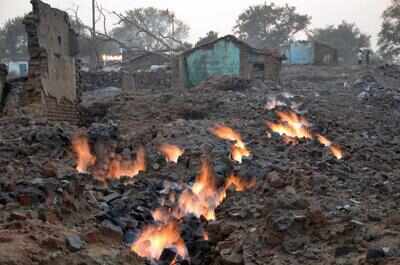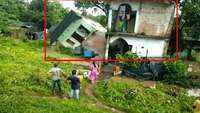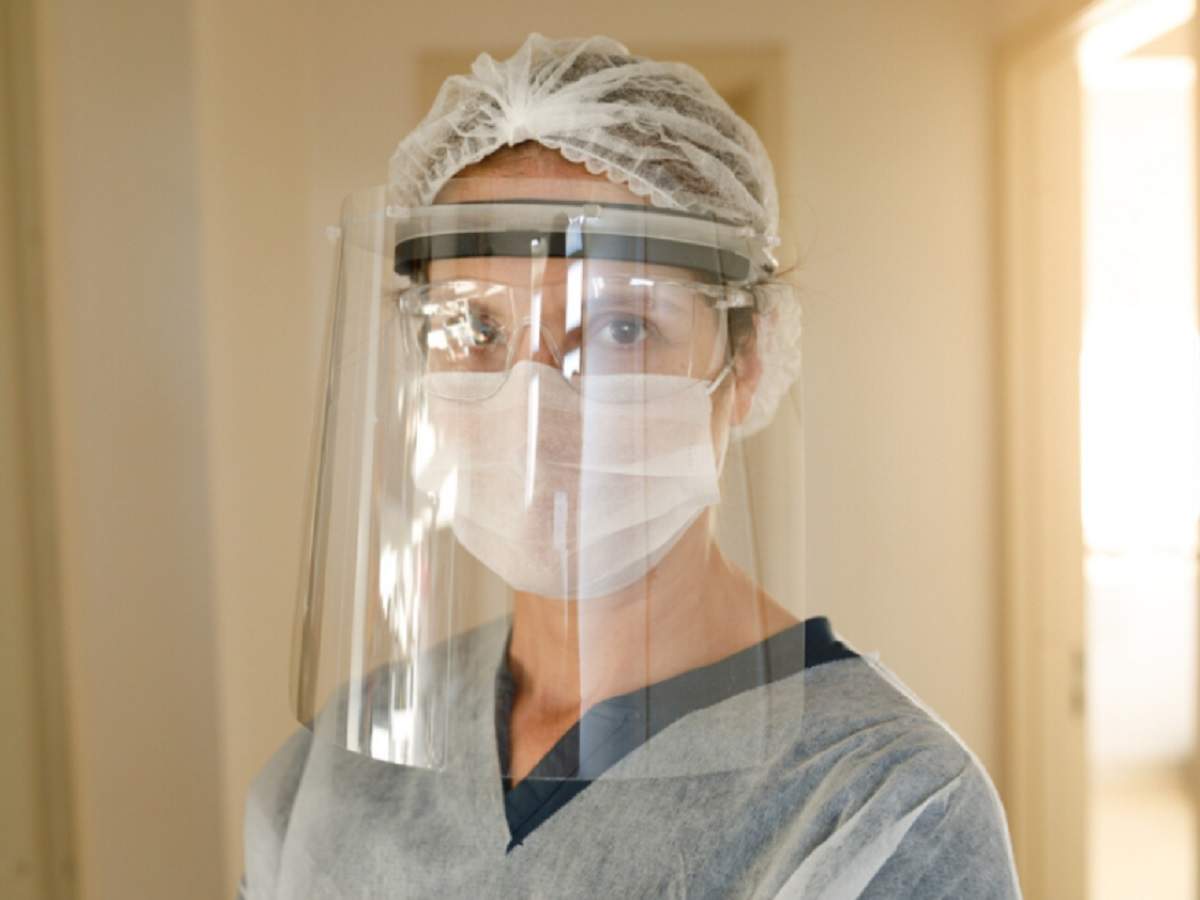
Despite being dragged for ages, the issue of a slow-paced rehabilitation process to shift people from areas affected by underground fire seems to have not stirred up authorities from their slumber as residents continue to risk their lives in the subsidence-prone areas of Jharia even today, more than a hundred years after the first incident of loss of property and life was recorded in 1916.
While a shoddy master plan, lack of employment opportunities and crumbling houses at Belgaria Township (the place of rehabilitation), which led many to resettle in Jharia and others to not agree to shift, have collectively delayed the progress of the project, the speed of building the apartments at the township has also rendered the rehabilitation project to progress at a snail’s pace.
In 2016, talks to adopt pre-fabrication technology were initiated. This technology of building houses shifts from the traditional way of casting the concrete and framework on site and instead finishes it in factories. The factory-made components are then brought on site and assembled to make houses. Although slightly costlier than the traditional method, this process helps in building houses faster.
In January 2016, a five-member team of experts led by Sunil Burnwal, chief secretary to former chief minister Raghubar Das, accompanied by JRDA officials visited the Shiv Nadar School of HCL in Faridabad and a comprehensive report was submitted to the state mines and geology department on the aspects of pre-fabrication technology.
Between June 2016 and December 2018, meetings were held at the Jharia Rehabilitation and Development Authority (JRDA) board level, state mines department level, state chief secretary level and also at the high-powered committee of ministry of coal on fire, subsidence and rehabilitation level, but pre-fabrication technology could not be implemented in Jharia.
The talks had briefly gained pace in 2017 under the then state chief secretary Raj Bala Verma on her visit to Dhanbad on May 30, 2017, five days after a father-son duo slipped into a crater formed due to underground fire in the Surratand area. Verma ordered the district administration, JRDA and officials of Bharat Coking Coal Limited to accelerate the process to rehabilitate families from the 42 most dangerous areas. She also asked the authorities to shift RSP College and Raj Plus Two School to safer places and most importantly, batted for the use of pre-fabrication technology to speed up civil works at Belgaria.
On November 10, 2017, the high-powered committee meeting of the ministry of coal on underground fire, subsidence and rehabilitation held in New Delhi approved the use of pre-fabrication technology to speed up the process. However, the mandatory technical sanction could not be given by the state public works department and expert opinion of institutions like IIT (ISM), CIMFR, CMPDIL could not be taken.
Renewed talks on use of pre-fabrication technology began in November 2018 when a JRDA team led by then Dhanbad deputy commissioner-cum-JRDA MD Anjaneyulu Dodde visited Bilaspur and New Raipur to study different types of pre-fabrication technologies, including monolithic and pre-cast penal technologies. However, the new technology could not be adopted due to space constraint (not more than three-storeyed buildings can be built using pre-fabrication technology) and financial crunch.
It would be inappropriate to say that the project did not see any change in all these years in terms of civil works. Firstly, it shifted from using red top soil bricks to those made with fly ash after the state government directed the use of fly ash bricks for government buildings. Secondly, in order to accommodate more families, JRDA later began constructing four-storeyed apartments in place of three-storeyed ones.
When contacted, executive officer of JRDA Santosh Mishra refused to comment on the non-adoption of pre-fabrication technology, but said, “We have completed 6,000 houses at Belgaria Township and overall 18,000 houses are under construction.” Mishra also added that JRDA is facing a fund crunch to build the houses.
While a shoddy master plan, lack of employment opportunities and crumbling houses at Belgaria Township (the place of rehabilitation), which led many to resettle in Jharia and others to not agree to shift, have collectively delayed the progress of the project, the speed of building the apartments at the township has also rendered the rehabilitation project to progress at a snail’s pace.
In 2016, talks to adopt pre-fabrication technology were initiated. This technology of building houses shifts from the traditional way of casting the concrete and framework on site and instead finishes it in factories. The factory-made components are then brought on site and assembled to make houses. Although slightly costlier than the traditional method, this process helps in building houses faster.
In January 2016, a five-member team of experts led by Sunil Burnwal, chief secretary to former chief minister Raghubar Das, accompanied by JRDA officials visited the Shiv Nadar School of HCL in Faridabad and a comprehensive report was submitted to the state mines and geology department on the aspects of pre-fabrication technology.
Between June 2016 and December 2018, meetings were held at the Jharia Rehabilitation and Development Authority (JRDA) board level, state mines department level, state chief secretary level and also at the high-powered committee of ministry of coal on fire, subsidence and rehabilitation level, but pre-fabrication technology could not be implemented in Jharia.
The talks had briefly gained pace in 2017 under the then state chief secretary Raj Bala Verma on her visit to Dhanbad on May 30, 2017, five days after a father-son duo slipped into a crater formed due to underground fire in the Surratand area. Verma ordered the district administration, JRDA and officials of Bharat Coking Coal Limited to accelerate the process to rehabilitate families from the 42 most dangerous areas. She also asked the authorities to shift RSP College and Raj Plus Two School to safer places and most importantly, batted for the use of pre-fabrication technology to speed up civil works at Belgaria.
On November 10, 2017, the high-powered committee meeting of the ministry of coal on underground fire, subsidence and rehabilitation held in New Delhi approved the use of pre-fabrication technology to speed up the process. However, the mandatory technical sanction could not be given by the state public works department and expert opinion of institutions like IIT (ISM), CIMFR, CMPDIL could not be taken.
Renewed talks on use of pre-fabrication technology began in November 2018 when a JRDA team led by then Dhanbad deputy commissioner-cum-JRDA MD Anjaneyulu Dodde visited Bilaspur and New Raipur to study different types of pre-fabrication technologies, including monolithic and pre-cast penal technologies. However, the new technology could not be adopted due to space constraint (not more than three-storeyed buildings can be built using pre-fabrication technology) and financial crunch.
It would be inappropriate to say that the project did not see any change in all these years in terms of civil works. Firstly, it shifted from using red top soil bricks to those made with fly ash after the state government directed the use of fly ash bricks for government buildings. Secondly, in order to accommodate more families, JRDA later began constructing four-storeyed apartments in place of three-storeyed ones.
When contacted, executive officer of JRDA Santosh Mishra refused to comment on the non-adoption of pre-fabrication technology, but said, “We have completed 6,000 houses at Belgaria Township and overall 18,000 houses are under construction.” Mishra also added that JRDA is facing a fund crunch to build the houses.
Quick Links
Kerala Coronavirus Helpline NumberHaryana Coronavirus Helpline NumberUP Coronavirus Helpline NumberBareilly NewsBhopal NewsCoronavirus in DelhiCoronavirus in HyderabadCoronavirus in IndiaCoronavirus symptomsCoronavirusRajasthan Coronavirus Helpline NumberAditya ThackerayShiv SenaFire in MumbaiAP Coronavirus Helpline NumberArvind KejriwalJammu Kashmir Coronavirus Helpline NumberSrinagar encounter
Get the app








